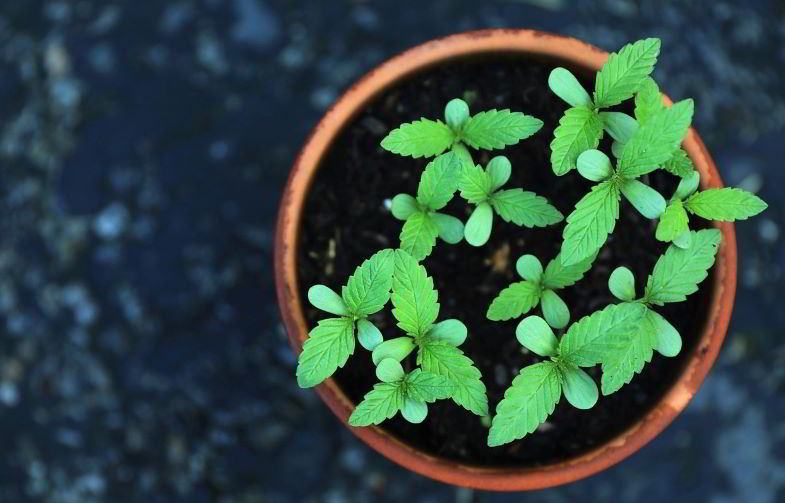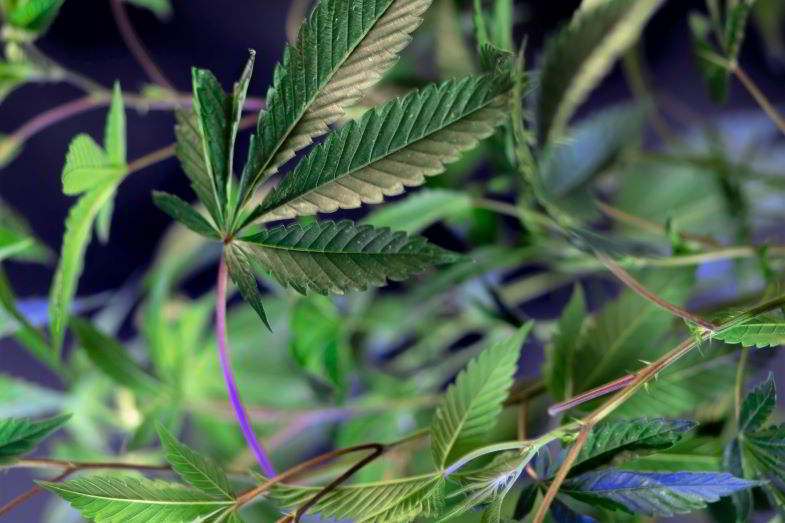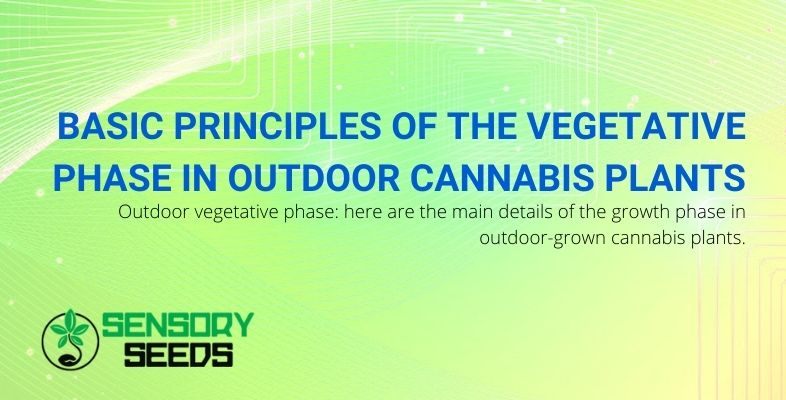Published on: 19/07/2021
Outdoor vegetative phase: here are the main details of the growth phase in outdoor-grown cannabis plants.
Hemp plants can be grown both outdoors and indoors.
In indoor cultivation, the temperature, humidity, and light exposure are imposed artificially, whereas outdoors you rely on the rhythms of nature, and you have to deal with pests and other external factors.
In this article, you will find the most important information about the outdoor vegetative phase.
We will explain why it is important to start with the right cannabis seeds, what you need to consider, and how to proceed with watering and fertilizing, for your plants to develop at their best during this period.
Here are the basic principles of the outdoor vegetative phase.
Vegetative phase: meaning and main concepts.
The vegetative phase of a cannabis plant, also known as the ‘veg’ phase, is the period starting from the germination of the marijuana seeds to the beginning of flowering, and it is a period of very fast and explosive growth.
Initially the seeds give rise to seedlings, consisting of two cotyledons and a very short stem.


Then the first true leaves will emerge and within a few weeks (usually 2 or 3) the fan leaves will develop, the larger leaves whose purpose is to absorb as much light as possible to provide the plant with energy (photosynthesis).
This is the real start of the vegetative phase.
Depending on the variety of the plant, the gene pool, and the aim of the growers; the vegetative phase can last as little as 3 months or as long as 16 months and the plant itself develops differently.
Sativa-dominant varieties reach quite a high height but don’t develop as many side branches, while seedlings born from auto flower seeds will remain smaller (think also dwarf auto-flowering plants).
In short, each variety has its own specific characteristics that become apparent during this period and every cannabis grower needs to be aware of these in order to obtain the best harvests.
If the plants grow lush, strong, and healthy during the vegetative phase, it is a good starting point to obtain quality flowers.
Read also: A basic guide to indoor growing: here are 5 key points.
Outdoor vegetative phase: What you need to consider to keep your plants healthy.
In order to ensure that the vegetative growth of hemp plants grown outdoors goes smoothly, it is important to start with the right weed seeds.
Some varieties are better suited to certain climate zones, are more resistant to pests and need certain hours of sunlight, while other varieties grow better indoors.
Let’s start with the resistance factor.
Before choosing whether to plant feminized seeds, auto-flowering seeds, or any other variety; cannabis growers should make sure that they are dealing with a cannabis variety that can withstand attacks from insects and pests.
Planting the right varieties will allow you to use fewer insecticides.
Trichome-rich varieties are a good choice here, as they act as insect repellents and are also able to regulate themselves better according to changes in temperature.
As far as climate is concerned, the plants that do best in outdoor cultivation in tropical climates are the Sativa-dominant ones, while those that do best in hot, dry climates are the Indica-dominant ones.
Plants born from auto-flowering seeds, on the other hand, thanks to their very short growth cycle, manage to remain in excellent condition during vegetative growth even in colder climates.
When it comes to the timing of growth outdoors, it is important to take into account the maximum time intervals, i.e. how long the vegetative phase of a given variety of hemp lasts so that the flowering phase can be reached in autumn.
If you are dealing with a type of plant which has a vegetative phase of about 5 months (such as photoperiodic plants), you should plant the seeds 5 months before autumn.
If you are dealing with a plant that only needs 2 months to flower (such as auto-flowering plants), you will need to plant it 3 months later than the previous plants in order to have flowers in autumn.
Of course, it is also possible to customize the type of growth of each variety.
It is no coincidence that some canapiculturists lengthen the vegetative phase of the fastest varieties (such as those born from fast seeds), or if they have to deal with plants with sativa tendency they make them smaller and bushier thanks to the topping technique.
In order to be able to achieve lush flowering, however, you need to know as much as possible about both the plants and the environment.
In contrast to indoor cultivation, outdoor cultivation relies on the rhythms of nature and it is good to be prepared for every eventuality.


Irrigation and fertilizer use during the outdoor vegetative phase.
For the outdoor growing phase of hemp plants to be managed in the best possible way, in addition to everything listed in the previous paragraph, it is also important to pay attention to watering levels and fertilization.
First of all, it should be made clear that in order to ensure that the cannabis plant can absorb all of the nutrients in the best possible way and grow strong and lush, it is important to move the plant into larger pots at the beginning of the vegetative phase.
This gives the root system the chance to expand freely (without getting tangled up and stunting growth) and to absorb all of the nutrients that the plant needs.
In the early stages, it is important not to water young plants too much, as they are able to absorb too little liquid, so too much water can lead to root rot.
As the plant grows, the dose can be increased.
It is impossible to give precise data on hemp plants in general, as every outdoor crop can be affected by several factors, ranging from temperatures, outdoor humidity, and the type of substrate used.
What is important to emphasize, however, is that it is always best not to over-water.
In fact, when a plant has wilted because it needs more water, it can be restored by increasing the dose, whereas if it is suffering from too much moisture it is very difficult to recover.
As far as fertilization is concerned, the main ingredient during the vegetative phase is nitrogen, and in fact hemp growers mainly use organic NPK (nitrogen, phosphorus, and potassium) products in a 2:1:1 ratio.
Naturally, the application of fertilizers must also take in consideration the health of the plant and it is best not to overdo the doses.
When the leaves are green and vital, the plant is getting the right amount of nutrients, but if they are yellow and tend to fall off, something is wrong and it could be a case of over-fertilization or of a lack of nutrients.
To ensure that the vegetative phase develops in the best possible way, therefore, it is best to proceed step by step and only increase the dosage of fertilizer if necessary.
Read also: How to repot a marijuana plant: characteristics and care required for perfect repotting.
To conclude.
These are the main facts about the outdoor vegetative phase.
They are as simple as they are important, and, as you have read, depend primarily on choosing the right seeds.
Buying marijuana seeds of the ideal variety for every context can make a big difference to the yield and to the health of your marijuana plants during the vegetative phase and consequently to the flowering and harvesting phases.
After this in-depth information, we would like to remind you that it is not legal to grow hemp without a permit.
However, if you like to collect the best seeds of this plant with its many properties, we invite you to visit our store: Sensory Seeds.
Buy your favorite products and complete your collection!
See you soon on sensoryseeds!









